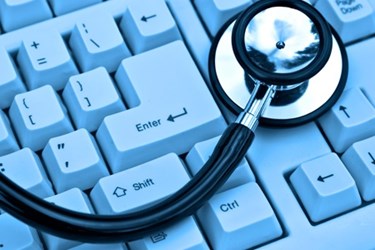A New Era For IT In Healthcare - Are You Prepared To Achieve The Quadruple Aim?
By Marie Murphy, Delivery Director, Optimization and Implementation at CTG

Information technology professionals have never played a more important role in healthcare or been more responsible for its ultimate success or failure. If information is the new lifeblood of healthcare, data are the platelets that comprise it and IT infrastructure is the circulatory system it moves through. In my 30 years in the industry, I’ve seen technology’s role grow in importance and today I would argue that it is ground zero for each objective of the “Quadruple Aim.”
It’s a new dynamic that reflects a singular reality: Healthcare, depending on who you speak with, is either on the precipice of a technological revolution necessitated by a rapid shift away from a fee-for-service model to value-based care, or alternatively an evolution that reflects a steady transition to a technology-based system that focuses on patient outcomes. In reality, it’s both - a (r)evolution that’s steady in its progress and shaped by a rapidly changing technological environment. Consider how IT is shaping each of the four objectives at the modern hospital:
- Improving the Patient’s Experience and Care: IT is increasingly involved directly or indirectly in virtually every aspect of clinical care. In a world of connected devices and clinical hardware, the importance of IT's role cannot be overstated for both ensuring smooth operation and securing these systems.
- Improving Population Health: To impact the health of entire populations requires not only for information to effectively flow between hospitals, physicians’ groups and clinicians, but also payers, pharmacies and patients. IT systems and infrastructure are the conduit through which this information sharing takes place and one could argue, the nervous system required to operate an effective accountable care organization.
- Decrease the Per Capita Cost of Healthcare: Through automation, IT by its very nature removes costs from the healthcare system, but its role extends far beyond that. With upcoming initiatives like the Centers for Medicare and Medicaid Services’ Risk Adjustment and Hierarchical Condition Category (HCC) coding, IT will play an important role in ensuring that all related patient information is defensible and properly documented - a reality that will dramatically impact the bottom line.
- Improve the Workplace Experience of Doctors and Clinicians: IT’s impact on the fourth objective of the “Quadruple Aim” is no less significant. Initiatives such as EHR optimization have helped free physicians from administrative work and enabled them to do the thing that makes most the happiest - spend more time helping patients.
This isn’t to say that IT inherently achieves the four objectives of the “Quadruple Aim.” Effectively tackling these objectives requires a keen focus on three key areas that ensure data is transformed into actionable information. The first includes business process automation. Before an IT department can put the systems and processes in place to effectively use information across the organization – and with stakeholders across the entire healthcare landscape – it must first understand how data, and the insights gleaned from it, is shared and used. With this knowledge, IT can then automate the sharing, storage and protection of data in ways that make the useful information within it easily attainable, free clinical staff members from an administrative burden and result in faster, better care for patients.
A data and document management process must also be in place. This ensures data is collected and processed in a consistent manner, it’s clean in all of its forms, including structured and unstructured data, and arranged so that it can be used effectively and consistently. These requirements will also increasingly apply to real-time streaming data that stakeholders can use to better serve patients and further population health efforts. For example, pharmacies will be able to alert doctors when a patient fails to pick up their prescription or let the primary-care doctor know in real-time when another caregiver prescribes a potentially contradictory therapy.
Finally, data becomes information when it can be acted on. With analysis and visualization, data can be presented to not only reveal actionable information, but also illustrates patterns. For this reason, business intelligence (BI) and analytics - including self-service - will increasingly be relied upon by both caregivers and operational professionals at hospitals. In addition, dashboard modeling will increasingly show stakeholders where opportunities to better use information lie.
All of this foreshadows a new era for IT - one in which it will significantly shape the patient experience, provide caregivers with the insights and facts they need to shape the health of populations, lower costs and free doctors to help more patients. Are you ready for the (r)evolution?
About The Author
Marie Murphy is the delivery director, implementation/optimization at CTG. A veteran of the industry, Murphy has more than 30 years of experience in the clinical environment - including ambulatory and inpatient - with vendors, and within the regulatory community. Specifically, Murphy has helped hundreds of hospitals and physicians groups create evidence-based practices that harness IT best practices to achieve improved clinical and financial outcomes.
